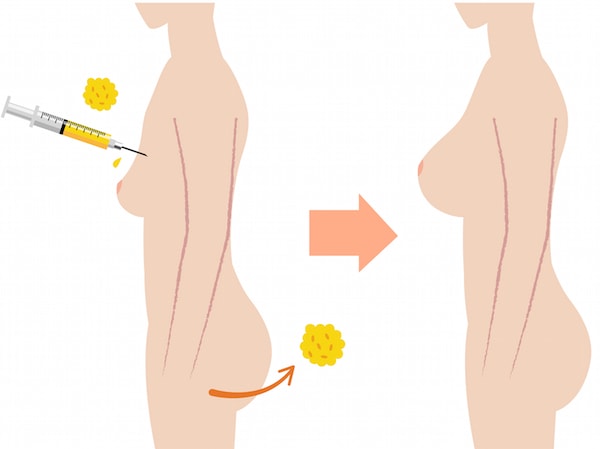Fat transfer is when a surgeon removes fat from one area of the body in order to inject the fat into another part of the body. The popularity of this treatment has grown in recent years as patients look to make a change in their appearance. Fat transfer has become a favorite method of adding body volume to patients who are hypersensitive to traditional dermal fillers such as bovine-derived collagen where the collagen is obtained from bovines so the results of an allergy test on patients will determine whether they are eligible for the procedure or not. This is not true in the case of fat transfer because it has been shown to have no chance of an adverse allergic reaction since the fact comes from the body of the actual patient.
Fat Transfer Tragedies
As popular as fat transfer has become in America, there are still some risks involved in having the procedure as shown below:
- The story of a 30-year-old Swedish man who went in for a two-part surgery to enhance his penis was shared by the Journal of Forensic Sciences. The doctor performing the surgery was supposed to take fat from one part of the body and transfer it to the penis in order to provide enlargement. Unfortunately, the process didn’t end as expected. One hour after the doctor injected the fat; this relatively healthy man went into cardiac arrest and died. An investigation into the matter showed that the man had suffered a pulmonary fat embolism. This is a process by which fat tissue passes into the bloodstream and lodges within a blood vessel. Fat embolisms have become more common in patients who have undergone a Brazilian butt lift (BBL). Once the injection of fat enters the blood vessels, a person can quickly experience trouble breathing, an irregular heartbeat and even small hemorrhages in the neck or shoulders. When referring to this case, Tobia Kohler, a Mayo Clinic urologist was stern in his words, “It is a completely useless procedure that never works and disfigures men, and could kill you. This is the worst case, but there are lots of other horrible consequences, from disfigurement to permanent erectile dysfunction to even worse.”
- Another tragedy was the case of a 29-year-old woman who went in for elective plastic surgery that went awry. Heather Meadows was from West Virginia and she died during the surgery for a BBL. She drove with a friend to Encore Plastic Surgery in Florida to undergo the surgery. Just like the 30-year old Swedish man above, Meadows went into cardiac arrest during the procedure. The doctors tried their best by acting swiftly to the situation but she was pronounced dead when she arrived at the hospital. Reports say she died because of a fat embolism coupled with an underlying heart defect.
Fat Transfer Risks and Possible Complications
Soreness and swelling are possible but they’re not experienced by every patient. In addition, the face or lips may reabsorb all or most of the fat injection.
Being disappointed with the results of a fat transfer procedure is also one of the rare possible risks and complications. This could be the result of an inadequate transfer of fat, the duration of the fat injection may not be expected by the patient or the part of body where the fat was transferred may not look exactly as the patient hoped.
While the cases described above generally count as “worst case situations”, some common risks patients should be aware of include:
- Blood Clots
- Infections
- Asymmetry
- Blood Loss
- Necrosis (death of fat cells)
Some Causes of Fat Transfer Complications
- Unlicensed performer: Fat transfer procedure requires training and experience which is what unlicensed practitioners don’t have. While they may know the anatomy of the body, they may not have received proper training in actually doing the procedure.
- Unsterile operating area and surgical instruments: An unsterilized surgical environment and tools expose patients to agents of infections that can cause complications during and after the procedure. Some of these complications can’t be corrected while some will need a second surgery to correct.
- Intramuscular injection of the grafted fat: This is actually a common technique but it presents danger to patients. This is especially true when the cannula is injected deep into the muscle where nerves and blood vessels lie. This is also the cause of a fat embolism which can be fatal to patients.
Patients Should Exercise Caution with a Fat Transfer
While people may dream about the results of enhancing their body, research about the kind of procedure they want to undergo is necessary and quite important. If they can avoid surgery, they should since all procedures come with risks. It should be noted that with procedures that use fat injections, the risk factor may be a little higher than normal. Some things are better left alone because, even if only minor complications arise, patients may not like the results that come afterwards.
Before undergoing any type of fat transfer procedure, patients need to schedule a consultation appointment with a board-certified physician. An experienced, board-certified doctor can go over any possible risks with patients and help them determine if the procedure they desire is the best way to achieve their desired results.
